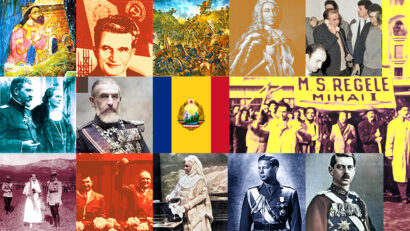The Wilson Principles
WWI was far from being ended, early into 1918. Neither of the two sides intended to back off, so under the circumstances, US President Thomas Woodrow Wilson made an attempt to make peace

Steliu Lambru, 08.10.2018, 12:11
World War One was far from being ended, early into 1918. The great clash between the two great military blocs, the Entente and the Central Powers had been gaining its momentum. Neither of the two sides intended to back off, so under the circumstances, US President Thomas Woodrow Wilson made an attempt to make peace. To that end, Woodrow Wilson and his entourage drafted the now famous declaration in 14 points, which was supposed to provide the grounding for a long-lasting peace.
Historian Ioan Scurtu will put things into perspective: “Work had been done on a project so that it could be put forward to the belligerent countries, in the hopes that they might consent to it, in an effort to achieve a long-lasting peace. So the 14 points presented by President Wilson were in fact a peace proposal, nay, they created a way of organizing the world after the war, in what we might call long-lasting history. As we can see, they had in mind the idea that neither the defeated nor the winning side, that is neither the Entente nor the Central Powers, should benefit from the military confrontation, as they wanted to achieve a certain kind of democratization of international relations. First of all they thought about the withdrawal of troops from the occupied territories, so that national borders be restored. Secondly, they wanted multinational states to grant autonomy to the peoples within their structure, so that they benefit from rights and freedoms, but within the confines of those empires.
President Woodrow Wilsons declaration ambitiously sought to be a pacifying one, reinstating the situation before 1914. However, President Wilsons declaration was equally meant to be an innovative one. All that was reflected in the way multinational empires had been dealt with, in the aforementioned declaration.
With details on that, here is the professor Ioan Scurtu: As regards Russia, they wanted to maintain it within the existing borders, before the outbreak of the war. Therefore, consistent efforts were made to create a benevolent stance towards it, to show good will, so that Russia join what would later become the League of Nations, a society where the powers could send delegates and where solutions to international problems could be discussed. In January 1918, the Russian revolution had already entered its Bolshevik, radical phase, the civil war had broken out, Bessarabia had proclaimed its autonomy and was getting ready to proclaim its independence as well as its union with Romania. As for Austro-Hungary, the document stipulated that the empire should be maintained, but larger autonomy should be granted to the peoples within that empire.
However, nations within multinational empires wanted a new order, that of nation states.
Professor Ioan Scurtu highlighted the reactions of the nations within the Austro-Hungarian Empire: “These 14 points had an extraordinary political and psychological impact. First and foremost because it aimed to have a peace without annexations, a post-war organization of the world so that no wars would occur anymore, and included a word dear to oppressed people, namely autonomy. In January 1918, the Romanians in the Austro-Hungarian Empire, like other nations, only wanted autonomy. They had demanded that along the years, especially after 1867, and were still hoping for that at that moment. The issue of the union emerged in the autumn of the year 1918, when the empire was faring worse and worse, and dismantling was on the horizon. The various peoples decided to take their fate in their own hands and organized into states.
At the 1918 congress in Rome, the nations of Austria-Hungary decided to start an ample campaign at a European and world level, in order to have recognized their right to decide their political future. In the US, meetings were held by representatives of nations in Austria-Hungary, mobilizing the diaspora in the United States. In addition, articles in the American press supported the demands of nations to the detriment of voices calling for Austro-Hungarian monarchy to be preserved. Starting in late August 1918, media campaigns by Romanian, Serbs, Croats, Czechs, Slovaks, Italians, and Poles were run jointly, issuing anti-monarchic resolutions.
Wilson’s political principles were not seen in a good light by the great European powers. France and Great Britain wished for the Central Powers to be held to account for starting the war, and punished. In the end, President Wilson bowed to public pressure.
Ioan Scurtu: “The campaign reached its peak on September 20, 1918, when President Wilson decided to host representatives of those nations at the White House. Each pleaded its own cause, and the president was informed on the campaigns they ran, and in conclusion he said that he was persuaded that the double monarchy, the Austro-Hungarian one, did not deserve to keep on being. The matter of the continued existence of the empire was settled. He was convinced that the peoples under the monarchy had a right to freedom, and had the support of the US in deciding their own fate.
After the change in perspective in Washington, new nation states emerged, such as Poland and Czechoslovakia, while others, like Romania and Yugoslavia, were redefining themselves. If Woodrow Wilson’s political principles were redefined, the philosophical ones were there to last. The institution of nations had gained shape, an international agora to establish the basis of international law. Wilson’s idea of eternal peace, in spite of general skepticism, was a good beginning for dialogue. (Translated by E. Nasta and C. Cotoiu)





























